-
 Drinking Vodka Tonic or Cosmopolitan Again? Why Stick to the Regulars When There's So Much More to Do with Vodka: 10 Recipes of Cocktails with Vodka That Will Blow Your Mind!
Drinking Vodka Tonic or Cosmopolitan Again? Why Stick to the Regulars When There's So Much More to Do with Vodka: 10 Recipes of Cocktails with Vodka That Will Blow Your Mind!
-
 Mango Shake isn't The Only Delicious Recipe You Can Make with the King of Fruits: Sweet & Savoury Recipes with Mangoes You Can Enjoy This Season (2020)
Mango Shake isn't The Only Delicious Recipe You Can Make with the King of Fruits: Sweet & Savoury Recipes with Mangoes You Can Enjoy This Season (2020)
-
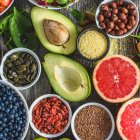 Make Your Tomorrow Healthy by Following a Healthy Diet Plan Today: 10 Healthy Habits of Eating to Adopt in 2020
Make Your Tomorrow Healthy by Following a Healthy Diet Plan Today: 10 Healthy Habits of Eating to Adopt in 2020
Why Should You Wash Your Vegetable?

Never has washing produce been so crucial than now during the time of the pandemic. Even though the COVID-19 virus doesn't stay on surfaces for a long time, it has brought into light the pesticides that layer it even days after harvesting. Not to mention the places it has been to and the processes it has withstood. From the time the farmers harvest the produce, it goes through a sorting phase, then packaged, shipped, and finally on the store shelves. Ever watched how many times they get touched and picked up throughout the day in the grocery store or supermarket.
The most crucial reason why experts suggest you wash your fruits and vegetables is that they can contain bacteria causing foodborne illnesses such as E.Coli. There have been salmonella outbreaks in the past due to contamination. They can be avoided when you thoroughly wash them before consumption. Glenda Lewis, an expert on foodborne illness with the U.S Food and Drug Administration, seems to suggest that the products are exposed to chemicals even in the growth phase, starting with those in the soil.
Also, they are sprayed with fertilizers and substances to help increase the growth for a better yield. Frequent exposure to these can cause certain types of cancers like leukemia in humans. Pandemic or not, you need to clean the vegetables and fruits.
How to Properly Wash Your Fruits and Vegetables?
How exactly do you wash your produce is the question here. Not just running underwater, you need to wash your fruits and vegetables a certain way in order to maintain the nutritional value. Experts also suggest you not to wash until you are ready to cook, as storing wet produce increases bacterial production. Hence, when you clean your produce depends on you but never start cooking without washing thoroughly.
Wash Your Hands
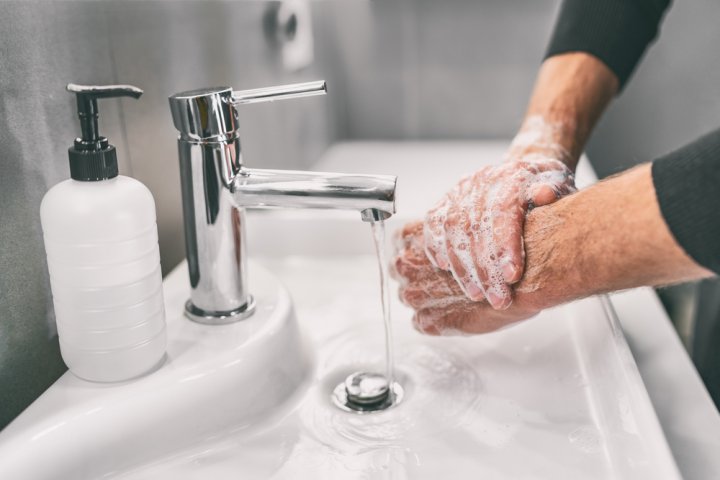
Firstly, start with sanitizing your hands. Wash your hands with warm water and soap for at least 20 seconds. It would help if you were doing this anyway now. Wash before and after handling produce just like you would with meat. The next step is to sanitize your workstation, including the cutting board, knife, and other tools. Ensure that you sort the vegetables and fruits from meat products, poultry, eggs, and seafood. Handle each one of them separately to avoid cross-contamination.
Inspect For Bruising and Damage
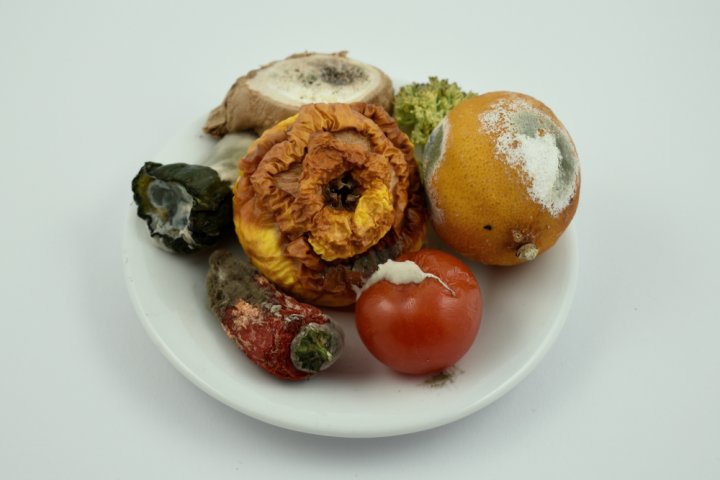
Make it a practice to select your produce when buying them. Inspect for blemishes and do not buy anything that has visible damages. Bruised and damaged fresh produce is the first to spoil. If you notice anything on your perishables, cut them off in those areas. Discard anything that looks too spoilt. They are more likely to deteriorate the condition of other fruits and vegetables. And with leafy vegetables like lettuce and cabbage, remove the outer leaves to reduce contamination risk.
If you are buying pre-packaged produce, you cannot see the worst of the bruises inside. Even though they are chosen carefully, it would not be the same as you selecting fresh produce. Whenever possible, buy them individually so that you can pick and choose the best of the bunch.
Wash and Dry the Produce

The best way to clean your produce is to wash it under running water. You can also use a vegetable scrubbing brush to clean the skin, but not any soap since it can leave a film of chemicals, which are harmful when ingested. Some store water in the sink to wash the vegetables. Not only is this unhygienic, but also that the drain may contain microorganisms, however clean it is. If you do have to wash it in stored water, a tub would be better.
This goes true even if you are peeling the skin. In case you do not rinse, the bacteria from the skin can contaminate the insides when you are cutting into it. It can also transfer to the work surface, and you run the risk of cross-contamination. Generally, experts suggest you wash the produce just before cooking. Wet produce creates a perfect breeding environment for bacteria.
The next step is to dry your produce. This is vital, even if you are about to cook them. The dripping water from the vegetables can cause the contaminants to transfer to the working surface or other foodstuffs. Use a paper towel or a dry cloth to wipe them down completely, especially if you are storing them.
Store it Properly
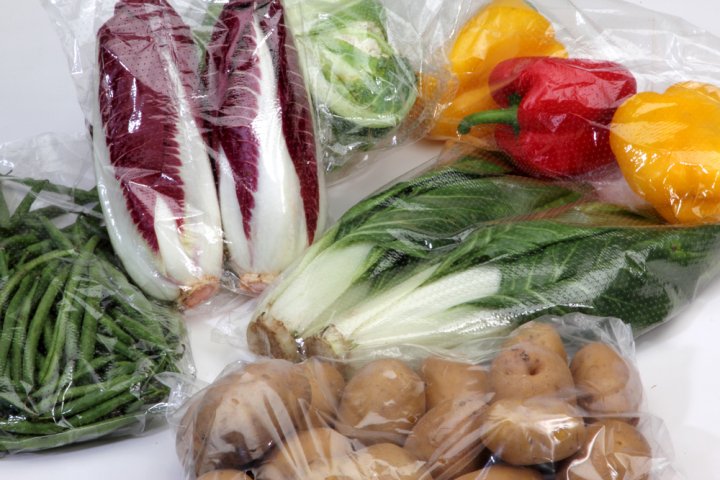
Now that your produce is clean and free of all contaminants, you must store them in the right conditions. Any fruits or veggies, precut, or whole that require refrigeration should be kept at 40℉ or even below. Wrap them loosely in a plastic bag and store them. Wrap leafy greens in a paper towel and refrigerated.
Different Ways to Remove Pesticides From Your Fruits and Vegetables
Did you know that the produce you buy is not as healthy as it seems? As packed as it is with nutrients, so are the pesticides. Unless you go organic, all the vegetables and fruits you buy are coated with chemicals you dare not ingest. You can get rid of about 75% of them with just water. But for the other 25%, you definitely need something more.
Here are a few methods of washing vegetables and fruits effectively and safely.
Water
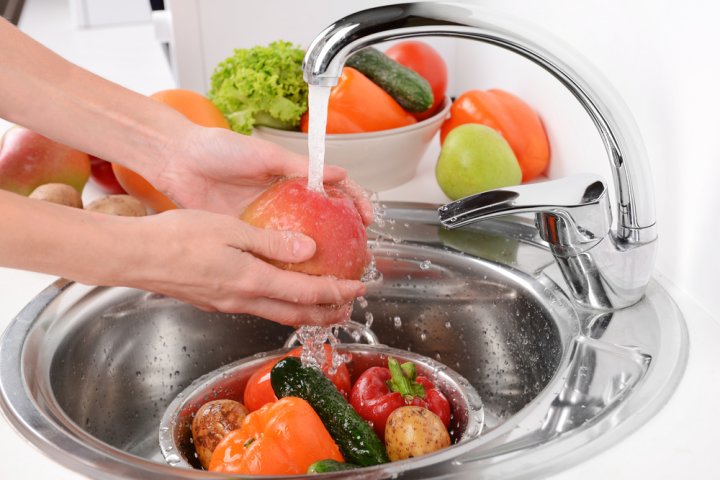
The first option is to wash the produce with water. This is the easiest and effective in most cases. And above all, it doesn't need any rising out. The best way, experts say, is to wash in cold running water or use a colander. If that is not a possibility or you think it is a waste of water, fill a tub with water and wash your produce there.
Use your hands to scrub the surface gently. You can also use a vegetable scrub or brush to wash away the contaminants and pesticides on them.
Vinegar
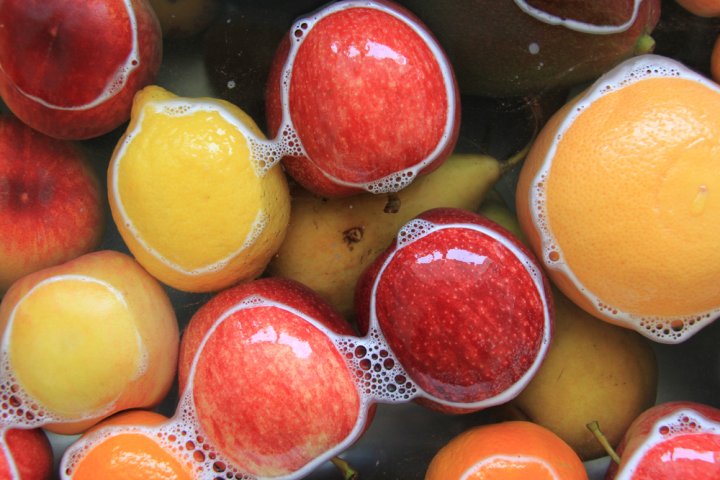
Vinegar makes a great cleaning agent due to the presence of acetic acid. It is so powerful that it can easily kill the bacteria on the produce's surface, not to mention the pesticide deposits, dirt, grease, and grime. This makes fruits and vegetables safe for consumption.
Make a solution of vinegar and water at a ratio of 1:3 and fill a spray bottle. Spray the solution onto the produce and gently scrub the surface with your hands if it is smooth-skinned like a tomato. But for vegetables with an uneven surface like broccoli or cauliflower, use a vegetable brush to clean the crevices lightly.
Alternatively, you can also soak the vegetables and fruits in the solution for 10 minutes and then rinse it away.
Salt Water
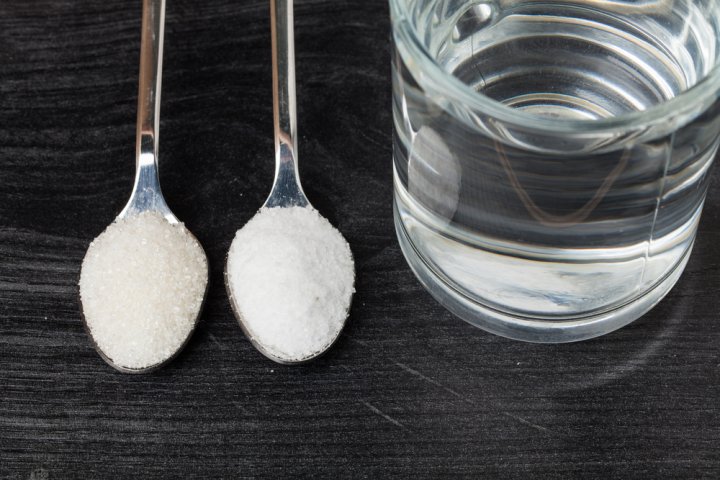
Did you know that your regular table salt can kill bacteria and also remove pesticides from the surface? Prepare a solution with 2 tablespoons of salt to 3 cups of water and stir it until it dissolves completely. Soak the produce in the salt solution for about half an hour. Then rinse in cold running water. As effective it may be, this method is not suitable for berries.
Turmeric
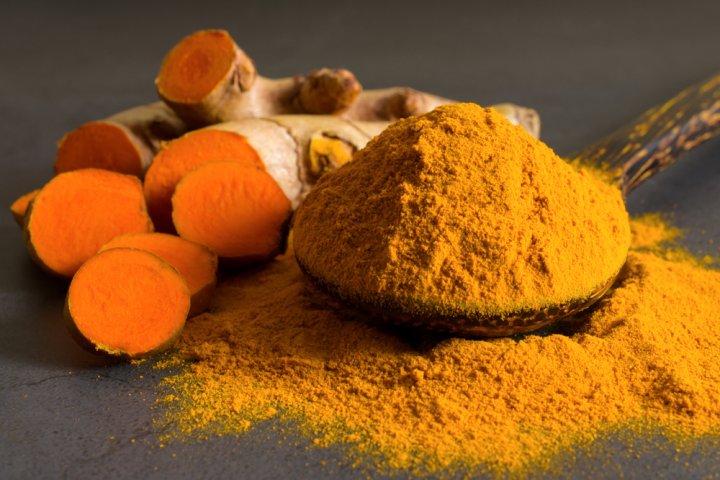
The pandemic has made us appreciate turmeric, the most versatile ingredient. It is an excellent antibacterial agent that can be used to clean the veggies. The curcumin present in turmeric acts to remove the contaminants such as pesticides and bacteria that reside on the surface of produce.
Prepare a solution by mixing 1 tsp of turmeric to 4 cups of water in a large vessel or tub. Soak all the vegetables and fruits for about 10 minutes, and then rinse in cold water. You can also add salt to the solution making it more effective.
Baking Soda
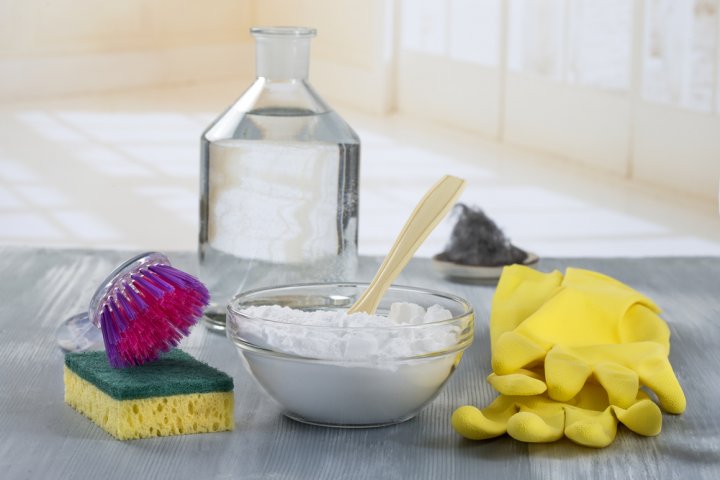
Baking soda is an effective way to clean not just produce but also your kitchen, microwave, etc. It can effectively break the molecules of pesticides rendering it inefficient, which can then be washed away by water.
As usual, prepare a baking soda solution with water. One ounce of baking soda to 100 ounces of water should do the trick. Soak the produce in the solution for 15 minutes. And then rinse away the contaminants by rinsing them in running water. You can also add lemon juice to the solution.
Blanching
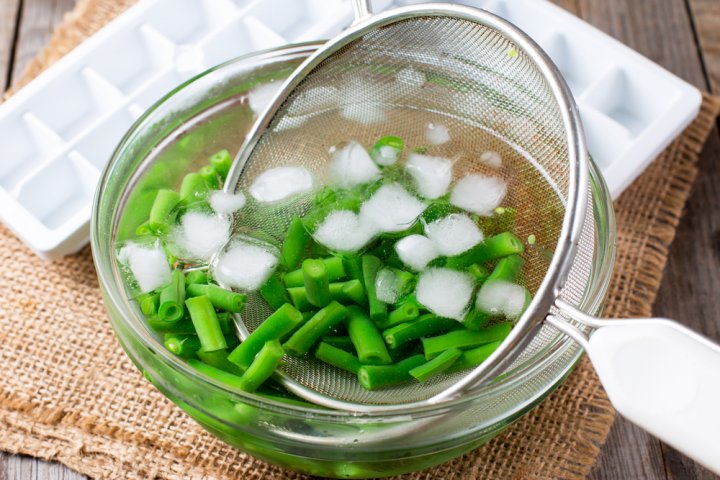
While the above removes all the pesticides, bacteria, and contaminants present on the produce's surface, it might not be enough for the paranoid. Hence, blanching. Boiling vegetables beforehand may not suit all produce, but you can blanch them.
Bring water to a rolling boil and switch off the heat. Soak the produce for 5 minutes and then remove them from the water. This is an effective and sure-shot way to remove pesticides. But the disadvantage is that you cannot use it to clean your fruits and also a few vegetables.
Hydrogen Peroxide
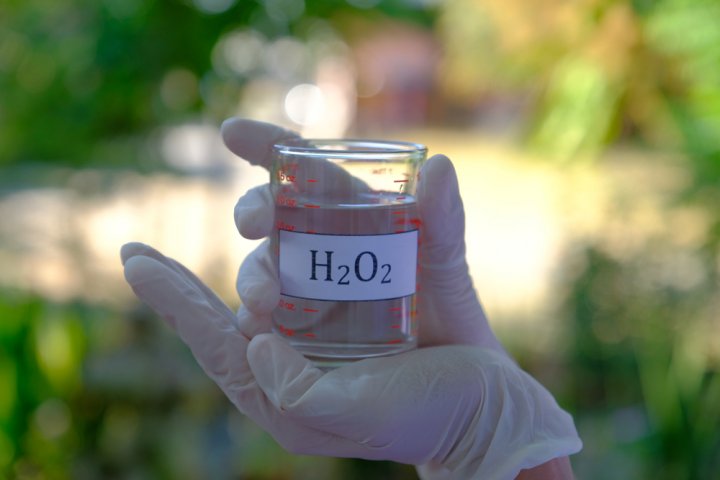
Another excellent option to clean your produce during this pandemic era is using hydrogen peroxide. It is also a disinfectant, so it can get rid of microorganisms and bacteria efficiently. Prepare a solution with 1 tablespoon of hydrogen peroxide to 3 litres of water. Add the veggies to it and let it soak for about 10 minutes. Afterward, give your produce a good rinse with running water.
Hydrogen peroxide in large quantities can be lethal. Hence take caution and use a food-grade for cleaning vegetables and fruits.
Guide to Washing Vegetables
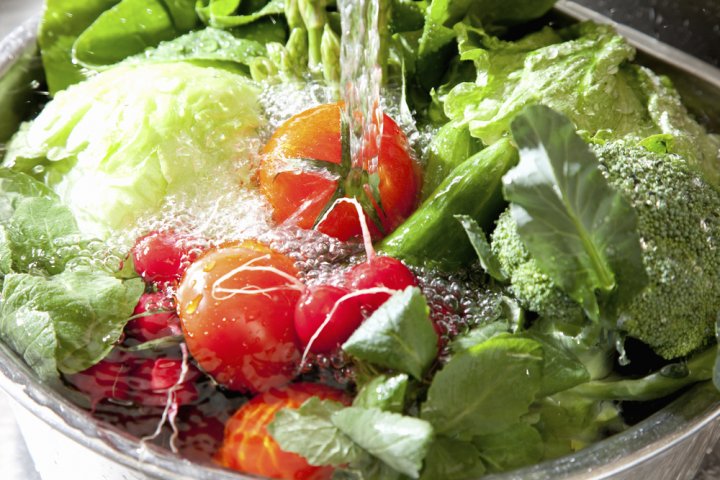
Now that you understand how important it is to clean produce and the different ways to wash them, here are more details on handling each vegetable. Not all the vegetables are washed the same way. Few need gentle handling, while others require a good scrubbing. Below are more details on the same.
- Firm Produce: Vegetables such as broccoli, cauliflower, melons, etc., have rough skin, which makes it easy for microorganisms to reside. It also makes cleaning difficult. Soak them and scrub them gently with a vegetable scrubber or brush.
- Smooth Skinned Produce: These include vegetables such as tomato that can be easily bruised by rough handling. Soak them or wash in running water, rubbing gently with your hands.
- Vegetables with Rinds: Veggies such as melons, asparagus, cucumbers, etc., have a rind, which is removed before consuming. Even then, you'd have to clean them with a vegetable brush since the bacteria on the surface can get into the food when you slice it.
- Root Vegetables: With root vegetables such as carrots, potatoes, and others, you have a much bigger problem than with bacteria and microbes. They also carry specks of dirt. Clean them with a firm vegetable brush or scrubber under running water.
- Leafy Greens: Leafy greens can be cabbage, kale, lettuce, baby spinach etc. If they are pre-bagged, wash them under clean running water and drain them in a colander. Then dry with a kitchen towel before storing. In the case of cabbage and lettuce, remove the wilted and dull leaves beforehand. Store them in an airtight box or Ziploc bag lined with paper towels or tea towels.
- Mushrooms: Never soak mushrooms in water. They tend to absorb water and spoil easily. Wash it in running water and use a kitchen towel or paper towel to remove the dirt. Pat dry and store them in an airtight box.
- Herbs: When it comes to herbs, dunk and swish them in water. Finally, dry with paper towels and store them as you would leafy greens.
Guide to Washing Fruits
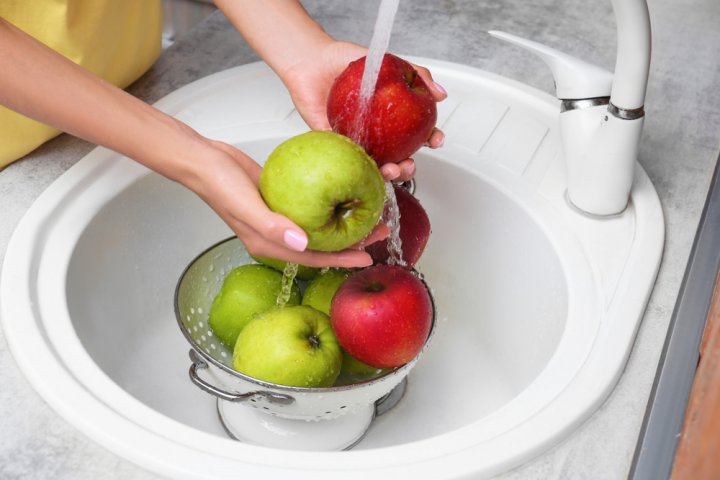
If you think washing vegetables is complicated, washing fruits is even more so. Unless you are careful, they can end up a mushy mouldy mess within a day or so.
- Smooth Skinned Yet Firm: Fruits such as apples are firm yet smooth-skinned, and breaking the skin might lead it to rot faster. Soak them in water and gently use a vegetable brush to remove the pesticides.
- Fruits with Rind: While you would be removing the rind, you should not skip washing as cross-contamination can occur when cutting them. Wash them thoroughly as needed with a firm vegetable brush.
- Melons: The skin of melons can be rough, and it can act as a refuge for harmful bacteria and microorganisms. Wash them firmly with a scrubber or brush under running water.
- Soft Fruits: Fruits such as peaches and plums should be washed in running water, rubbing gently with hands.
- Berries, Cherries and Grapes: Do not wash them until consuming. Separate the spoils and the bruised ones before storing them. Wash them in running water before eating.
Best Products to Effectively Clean Your Fruits and Vegetables
While the above is enough to clean your veggies and fruits, more products can help you achieve the same more efficiently and faster.
Kent Vegetable And Fruit Disinfectant
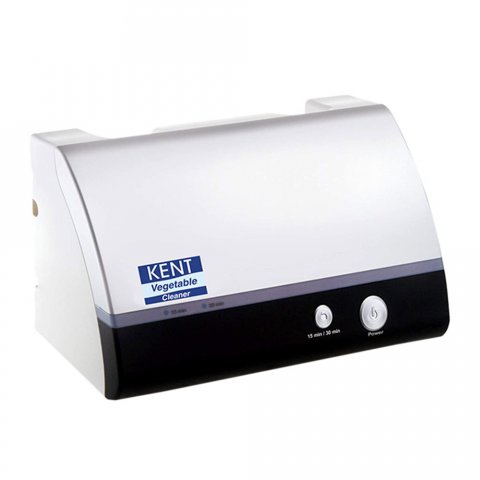
Packed with Ozone Disinfection Technology, the Kent Vegetable and Fruit Disinfectant makes the produce safe for consumption. It also maintains the freshness and extends the shelf life while cleaning and disinfecting the vegetables and fruits. The compact look makes it ideal for any kitchen. Moreover, you can also use it to clean meat and seafood too. You can buy it from Reliance Digital for Rs. 6,500.
Sophab Veg and Fruit Wash

Sophab Evergreen Just Wash is a natural and organic veggie wash that saves you time and cleans 99% of germs and pathogens interior surface of the produce. Their patented wash doesn't require a rinse afterward. It is also odourless and tasteless. Priced Rs. 189 for 200 ml, the product also increases the shelf life of the vegetables and fruits. Available for purchase on Amazon India.
Prestige Veggie Cleaner Ozoniser
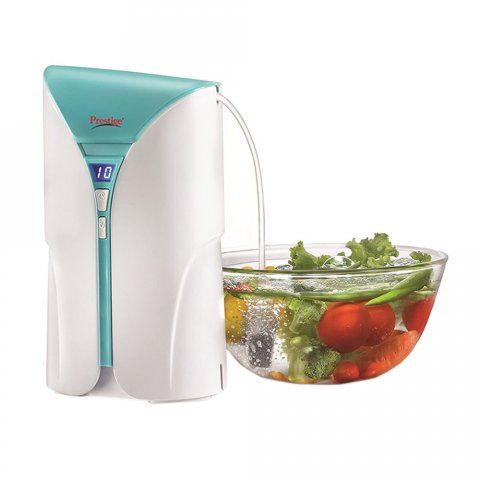
Prestige introduces a safe and healthy way to clean veggies and fruits using their patented O3 purification technology. Fill a bowl with water and add the produce. Place the head of the pipe inside the water and press the button. The Ozoniser does Everton for you in 10-30 minutes. Dry your fruits and store! The zero-maintenance product can be used to clean meat and seafood food too. You can buy it from Reliance Digital for Rs. 3,399.
-
 Are You Looking for a Water Purifier to Suit Your Sleek Modular Kitchen(2021)? 10 Best Under Sink Water Purifiers to Save Room in Your Kitchen
Are You Looking for a Water Purifier to Suit Your Sleek Modular Kitchen(2021)? 10 Best Under Sink Water Purifiers to Save Room in Your Kitchen
-
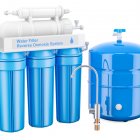 Can't Figure Out the Best Water Softener for Your Home? A Complete Guide on Water Softeners, Things to Look for and the Best Alternatives in the Market (2020)
Can't Figure Out the Best Water Softener for Your Home? A Complete Guide on Water Softeners, Things to Look for and the Best Alternatives in the Market (2020)
-
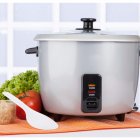 Is a Rice Cooker Worth It(2020)? How Do They Work?Here is a Guide on How to Properly Use a Rice Cooker
Is a Rice Cooker Worth It(2020)? How Do They Work?Here is a Guide on How to Properly Use a Rice Cooker
-
 Learn How to Clean a Fridge the Easiest Way Possible with Tips on How to Keep That Foul Odour Away from Your Refrigerator (2021)
Learn How to Clean a Fridge the Easiest Way Possible with Tips on How to Keep That Foul Odour Away from Your Refrigerator (2021)
-
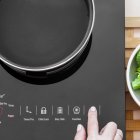 Looking for Alternatives to Gas Stoves? Here are The Best Induction Stoves & Electric Cooktops You Can Buy in 2020
Looking for Alternatives to Gas Stoves? Here are The Best Induction Stoves & Electric Cooktops You Can Buy in 2020
Do Not Use Alcoholic Sanitizers for Washing the Eatables!
After using the alcoholic sanitizers for disinfecting everything around you, you might feel tempted to try it on your eatables as well, thinking, what's the harm? But you must avoid it at all costs as it contains chemicals which are harmful to the body even in trace amounts; therefore, keep your eatables away from alcoholic sanitizers and use the methods mentioned above to clean your fruits and vegetables.


 Highlight the Best Facets of Your Incomparable Beauty: Discover the Best Face Highlighter Currently Available in India and Everything You Need to Know About Using Face Highlighters for Maximum Effect (2023)
Highlight the Best Facets of Your Incomparable Beauty: Discover the Best Face Highlighter Currently Available in India and Everything You Need to Know About Using Face Highlighters for Maximum Effect (2023)
 Forget the Blemishes and Get that Picture Perfect Flawless Radiance on Your Face: Check out the Best Foundations for Oily Skin Currently Available in India and Everything You Need to Know About Makeup Foundations (2023)
Forget the Blemishes and Get that Picture Perfect Flawless Radiance on Your Face: Check out the Best Foundations for Oily Skin Currently Available in India and Everything You Need to Know About Makeup Foundations (2023)
 Make Your Presence Felt Wherever You Go: Discover the Best Perfumes Under 2000 for Both Men and Women to Announce Your Arrival and Make Any Occasion Memorable (2023)
Make Your Presence Felt Wherever You Go: Discover the Best Perfumes Under 2000 for Both Men and Women to Announce Your Arrival and Make Any Occasion Memorable (2023)
 Protect Your Oily Skin from the Harmful Rays of the Sun: Discover the Best Gel Based Sunscreens for Oily Skin and Everything You Need to Know Before Buying One (2023)
Protect Your Oily Skin from the Harmful Rays of the Sun: Discover the Best Gel Based Sunscreens for Oily Skin and Everything You Need to Know Before Buying One (2023)
 Minor Blemishes and Wrinkles Affecting Your Confidence? Check out the Best BB Creams to Conceal Your Worries and Nourish Your Skin to Restore the Healthy, Radiant and Glowing Complexion Back Again (2023)
Minor Blemishes and Wrinkles Affecting Your Confidence? Check out the Best BB Creams to Conceal Your Worries and Nourish Your Skin to Restore the Healthy, Radiant and Glowing Complexion Back Again (2023)
